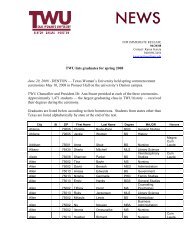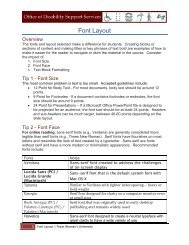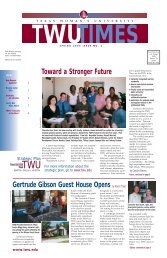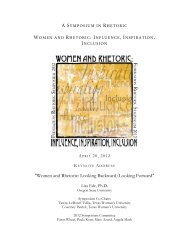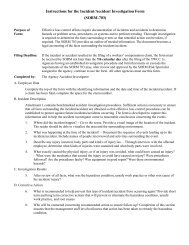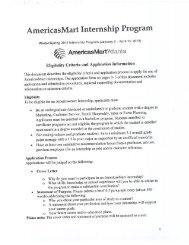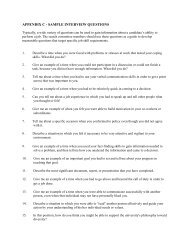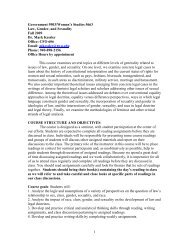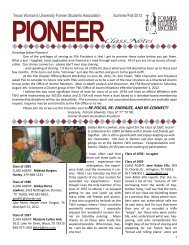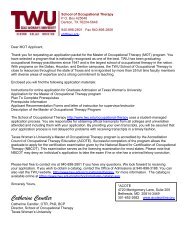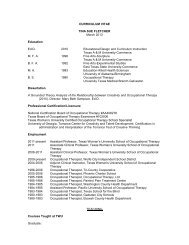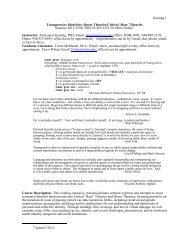HUMPHRIES' ASSESSMENT OF AQUATIC READINESS (HAAR) A ...
HUMPHRIES' ASSESSMENT OF AQUATIC READINESS (HAAR) A ...
HUMPHRIES' ASSESSMENT OF AQUATIC READINESS (HAAR) A ...
You also want an ePaper? Increase the reach of your titles
YUMPU automatically turns print PDFs into web optimized ePapers that Google loves.
lowing bubbles without consuming the water, and submerging his/her head in the water<br />
without consumption of the water.<br />
Phase 3:<br />
Rotations<br />
Phase 3 shows the first steps toward aquatic independence for the student. This<br />
phase is described as one of the most important phases of the Halliwick Method. It<br />
ensures that the student is able to move his/her body in the different fundamental<br />
positions safely in the water. These are fundamental in that they allow the student to<br />
place themselves in the necessary positions to safely and affectively move in the aquatic<br />
environment. These rotations are the initial steps to more complex movements such as<br />
freestyle swimming and the breast stroke. They are also the foundation for safely entering<br />
and exiting the pool by the side of the pool without assistance of the pool steps. The<br />
rotations to be achieved are the vertical rotation which is controlled movement around the<br />
transverse axis. The lateral rotation which is controlled movement across the longitudinal<br />
axis. The combined rotation which is controlled movement along the diagonal axis<br />
(Nicol, Schmidt-Hansberg, & McMillan, n.d.).<br />
Phase 4:<br />
Balance and Controlled Movement<br />
Phase 4 shows that the student is able to control his/her movements in the water<br />
independently. The phase includes the components of mental inversion and balance.<br />
These tasks ensure that the student is able to control the movements of their body against<br />
the force of the water. It also ensures that the student is comfortable and capable of<br />
performing the rudimentary movements of more complex skills in the water (e.g.,<br />
independent swimming) and opposing the affects of the buoyancy in order to stay under<br />
the water when appropriate (Nicol, Schmidt-Hansberg, & McMillan, n.d.).<br />
24



